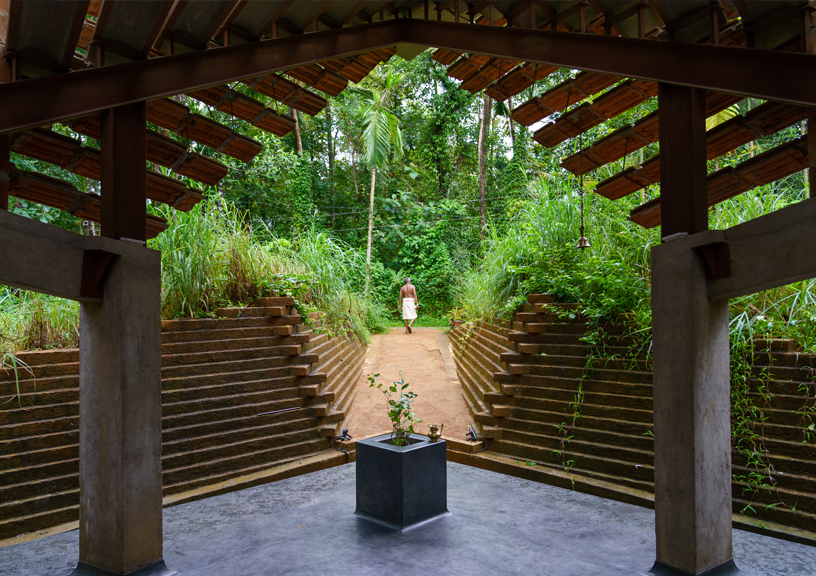The Chirath Residence in Kerala designed by architect Vinu Daniel elevates humble materials and gives a contemporary twist to traditional architecture
The owner Ramanujan Basha calls his home Chirath, which means a ‘lamp’ in Malayalam. While he was not entirely disapproving of the traditional style of architecture, Basha didn’t want his home to be entirely traditional. When Architect Vinu Daniel of Wallmakers first met the client, Basha mentioned his disapproval towards the traditional Kerala style of architecture. The traditional houses in Kerala are typically sloped roof structures with heavy overhangs. Although the roof prevented rain and the cooling was phenomenal, he was deterred by the atmosphere of darkness which stayed prevalent or was associated with the ambiance inside the house. “The second altercation was that many of the architectural systems that were in place promoted gender inequality in the olden days since women were restricted to the courtyard. Thus, during the early days of the project, the client had made a point that the house should be a symbol of a new light or a new outlook on our age-old systems and beliefs,” informs the architect. Daniel responded to the brief with a sustainable structure that was contemporary yet rooted in its vernacular context, and at the same shattering a few patriarchal norms of the region. In more ways than one, the ‘Chirath’ house stands as a symbol of a new light.

“The client asked for a solution by throwing away the bad and utilising the good,” informs Daniel. “We responded to his request by breaking the roof, splitting it open, and letting the light flow in, all this while using waste and mud to build the house.” For those familiar with Daniel’s style of architecture, it comes as no surprise that he’s a strong advocate of adaptive re-use in architecture. He builds with what’s available on the site. “What is waste? Waste can be classified as anything that was produced, used, and then discarded from its original function. While the work and construction process results in the production of a lot of scrap, we believe in not being deterred by this demon and instead of building with it,” informs Daniel.

“We used shuttered debris walls, a patented technique which involves the mixing of soil and waste materials/debris (in various sizes) along with cement, to erect a composite mud wall that gives a compressive strength of over 5.2MpA,” informs Daniel. For the roof, Daniel used Ferrocement shells. “These wafer-like structures are steel reinforced arched shells with effective thickness of 1.5cm and they take equal load of respective RCC slabs. They effectively reduce the overall cement consumption by 40% and steel consumption by 30%. These replace the RCC slab in roofing as they are as strong as 1200kg/sq m,” he informs. The furniture is made out of wooden scrap found on the site, and the terracotta jaali is repurposed from terracotta tiles available locally, accentuating the sustainability model of the house.

Amidst all the other pitched roof buildings in the locality, this pitched roof residence stands out due to its unique choice of materials and form. The rammed earth pathway, flanked by mud-rendered retaining walls ushers one into the house through the wild landscape
.


